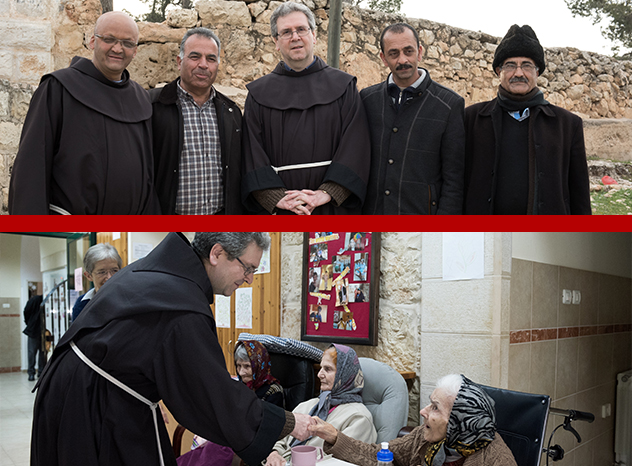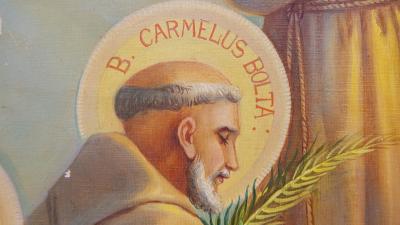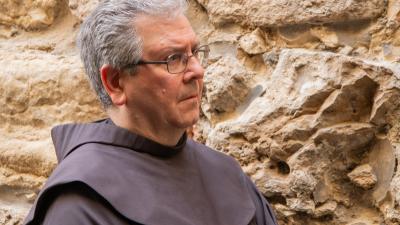
“It is the first time that the Custos of the Holy Land makes an official visit to Emmaus, for an occasion that is not the annual pilgrimage to the feast of Saints Simeon and Cleophas or for Easter Monday.” With these words, on March 21, Fr. Salem Younis welcomed the Custos of the Holy Land, Fr. Francesco Patton. Emmaus is located 11 kilometers from Jerusalem and is recognized as the place where Jesus appeared to the two disciples on the road after the Resurrection. Today, it is a predominantly Muslim village that only has one Christian family, but the sanctuary and nursery belonging to the Custody are a reference point for the whole community. Not many pilgrims, however, manage to visit it today, due to the construction of the separation wall between Israel and Palestine.
Thanks to Fr. Salem, the guardian of the sanctuary of Emmaus, relations with the local population are peaceful and constructive. Hence, the idea of a visit by the Custos and a meeting with the mayor. Even the German nuns who manage a center for seniors and for the disabled in Emmaus wanted to meet Fr. Patton and, thus, the house of the sisters was the first stop of his visit, after being welcomed at the Franciscan monastery. With approximately 30 employees and volunteers from the center, the Custos exchanged handshakes, smiles and shared his words of gratitude. The patience and care with which the elderly and mentally ill are cared for at the facility was visible at first sight. Fr. Francis stopped at each bed for a moment to greet and bless the residents.
The mayor of Emmaus, Hasanen Hammudah, waited for the Custos of the Holy Land at the municipal offices. Together with three other co-workers, he spoke about the situation of the village. “Here there is no distinction between a Muslim and a Christian. We are one family, we form a one body,” he said. In a fraternal and casual atmosphere, they discussed Easter and the traditional pilgrimage that is carried out every year on Easter Monday. “We want to thank Fr. Salem for his presence here,” said the mayor of Emmaus. “We see him as a son of our families.” The mayor announced one of the projects to place emphasis on the village is a historical photo album, in which the church is always visible, so as to raise awareness about the village’s history. The Custos of the Holy Land thanked everyone for the warm welcome and added, “I am always pleased when the friars of the Custody live with the people in the local community.”
What followed was a tour of the city in an old village house on a territory that in Emmaus they refer to as “the mountain top.” Owned by the Custody, it is land on which there are several Roman cisterns, but it is quite dilapidated. It is, thus, the desire of the mayor and the Custos, for mutual cooperation to carry out restoration work on this area. The goal is to bring back the same field, the same view, the same beauty, that all those who visited the area before it was in this state would have seen; visitors [now] are usually composed of Scouts or local families.
“Were not our hearts burning [within us] while he spoke to us on the way and opened the scriptures to us?” the disciples of Emmaus said to one another, as we read in the Gospel. Mayor Hasanen Hammudah has no doubts, “I want everyone to know that this is the place the Gospel speaks of. Our village is the real Emmaus.”
Beatrice Guarrera
►►► Related articles:




